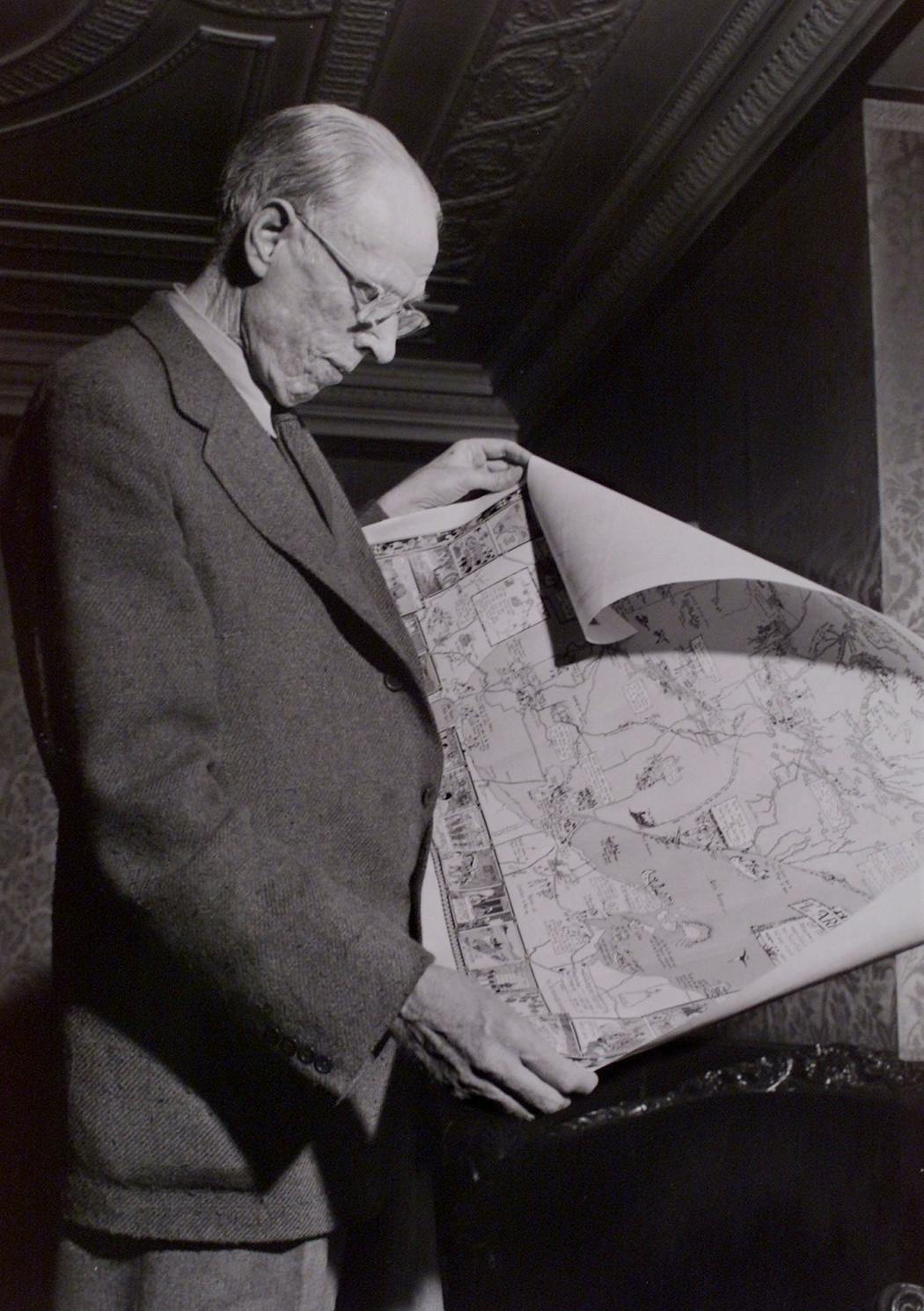Beyond the flat fields and prairies of west-central Minnesota is, surprisingly, one of the tallest peaks in Minnesota.
Climb a short but steep trail to the top of Inspiration Peak in Otter Tail County and wonder at the expansive vista of miles of fields, forests and lakes.
"I think it's a hidden gem," says Erik Osberg, who works for Otter Tail County to promote the area and draw new residents. "It offers a 'wow' moment."
For years, this stunning view between Alexandria and Fergus Falls was a well-kept secret — until famed novelist Sinclair Lewis sparked new interest in the remote spot.
The hills, which rise 1,750 feet above sea level, were first called Gaskibugwudjiwe by the Ojibwe. Early white settlers translated that into the Rustling Leaf Mountains and aptly deemed the highest point Inspiration Peak. It became public parkland in 1931, but it was more than a decade later that the area attracted buzz.
In 1942, Lewis, the winner of the 1930 Nobel Prize for Literature, wrote that he had returned to explore his home state and found, to his "considerable chagrin over my ignorance," that Minnesota rivaled New England for its scenic beauty.
For six weeks, the Sauk Centre, Minn., native trekked across the state and noted his "favorite discoveries," including the Leaf Mountains. In his writing, which was published in the Minneapolis Tribune (the Star Tribune's predecessor), he instructed visitors to climb the equivalent of a couple of city blocks "to a bald top from which there is to be seen a glorious 20-mile circle of some 50 lakes scattered among fields and pastures, like sequins fallen on an old Paisley shawl."
He added that he hoped authorities would never build a road to the top, ruining "the enchanting peace and seclusion of this place for contemplation."
He also lamented Minnesotans' lack of interest in exploring their own state. His Minneapolis friends were "canny and traveled persons," eagerly traveling to far-flung European spots, and yet they didn't know of the Leaf Mountains, he wrote. In fact, Lewis questioned if the governor had ever stepped foot on Inspiration Peak.
Today, Lewis is widely credited with bringing attention to Inspiration Peak thanks to his compelling campaign. But its secluded location still draws fewer visitors than other spots.
"It's certainly not as well-known as any of the North Shore peaks," Osberg says. "It's kind of off the beaten path. ... You don't usually just stumble upon it."
For visitors who seek out the spot, Osberg says they, too, can have that "moment of discovery" that Lewis did, marveling at the high vantage point.
A place to contemplate
The hills owe their origin to multiple glaciers tens of thousands of years ago. Glaciers created drumlins, or ridges, that stretch across the region and left behind deposits of sand and debris forming moraines, or mounds, including Inspiration Peak. In fact, west-central Minnesota is unusual for its diverse geological features, says Ben Eckhoff, an area naturalist with the Minnesota Department of Natural Resources (DNR), which manages Inspiration Peak, one of nine state waysides.
"That difference [in topography] is some of probably the most dramatic of anywhere else," Eckhoff says. "You've got all of these flat, low rolling farm fields and all of a sudden there's this giant hill out of nowhere."
The trail climbs 200 feet in elevation, winding a quarter mile through dense woods to the overlook, which is about 400 feet above the surrounding area. The sandy top of Inspiration Peak is covered with native prairie grasses that have been there for hundreds of years and flowers including bush clover and goldenrod. The trail is also popular for chasing fall colors when oak trees tinge red.
With no fee or reservation needed, the DNR can't track visitor numbers, but Eckhoff says the parking lot fills up on autumn weekends with some 100 people at a time.
Unfortunately, more visitors in recent years have veered off the designated trail, which ends at the overlook. By creating their own paths, hikers have worsened erosion of the sandy soil, so Eckhoff urges staying on the half-mile loop.
As you walk in Lewis' footsteps to the top, follow the author's advice for quiet contemplation. That's what Eckhoff does, envisioning how the panoramic view looked with fewer trees when Lewis stood there nearly a century ago.
"There's nowhere else like that really in that part of the state, where you can see as far as you can see," he says. "You can really picture what historically that area looked like and how its been transformed over time."
Complex stories of migration are among the finalists for the Women's Prize for Fiction
Olympian Kristi Yamaguchi is 'tickled pink' to inspire a Barbie doll

After 4 decades in music and major vocal surgery, Jon Bon Jovi is optimistic and still rocking
Rom-com author Emily Henry knows the secret to having a healthy relationship with love




